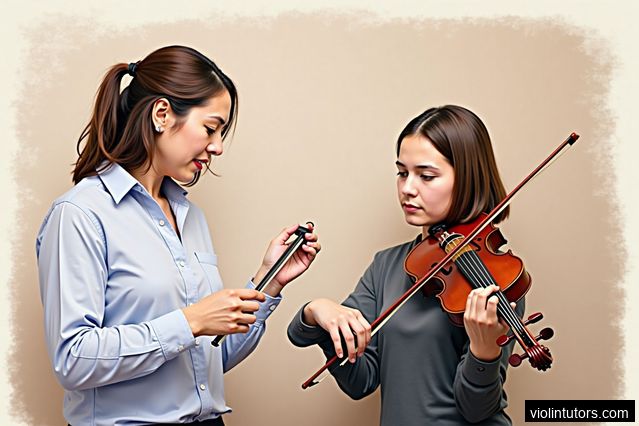Traditional Methods
Traditional violin teaching methods have been passed down through generations and provide a strong foundation for learning the instrument. These methods typically focus on developing proper technique, reading sheet music, and mastering classical repertoire. The Suzuki method, for example, emphasizes learning by ear and repetition, building a strong technical foundation through the use of scales and etudes, and gradually introducing more complex pieces as the student progresses. Other traditional methods include the Russian, French, and Hungarian schools, each with its own unique approach to teaching violin.
Innovative Approaches
In recent years, violin tutors have started incorporating innovative teaching approaches to cater to different learning styles and interests. These methods include the use of technology, such as online lessons and interactive apps, to enhance engagement and provide additional resources for students. Additionally, some tutors integrate elements of improvisation and popular music into their teaching, allowing students to explore different genres and express their creativity. These innovative approaches can help make violin lessons more enjoyable and relevant to students of all ages.
Alternative Methods
Apart from the traditional and innovative approaches, there are several alternative methods that offer unique perspectives on violin education. The Alexander Technique, for instance, focuses on body awareness and proper body alignment to prevent tension and promote effortless playing. This method emphasizes the importance of relaxation and efficient movement to enhance playing technique. Another alternative method is the Feldenkrais Method, which uses gentle movements and awareness exercises to improve coordination, flexibility, and overall musical expression.
Combining Methods
Many violin tutors prefer to combine elements from different teaching methods to create a personalized approach for their students. By drawing from various methods, tutors can tailor their teaching to the specific needs and goals of each individual student. This approach allows for flexibility and a more holistic learning experience. For example, a tutor may incorporate elements of the Suzuki method for ear training and technical development, while also integrating improvisation exercises from an innovative approach to foster creativity and musicality.
Modern Trends
With the advancement of technology and the changing landscape of music education, new trends in violin teaching have emerged. Online violin lessons have become increasingly popular, providing convenience and accessibility for students around the world. Additionally, the integration of multimedia resources, such as video tutorials and interactive practice platforms, has revolutionized the way students learn and practice the violin. These modern trends have opened up new possibilities for violin tutors and students alike, expanding the reach and impact of violin education.
The Importance of Finding the Right Method
While there are numerous violin teaching methods available, it is essential to find the right method that aligns with your learning style, goals, and interests. Every student is unique, and what works for one may not work for another. It is recommended to consult with a professional violin tutor who can assess your needs and guide you towards the most suitable approach. Remember, the journey of learning the violin should be enjoyable and rewarding, and finding the right method can greatly enhance your progress and musical experience.








